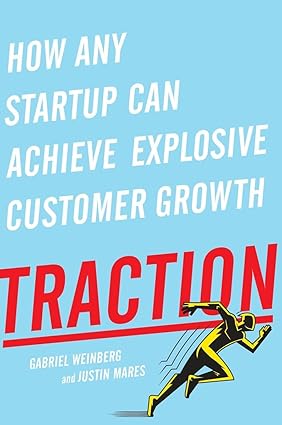In the competitive landscape of today's digital economy, website and ecommerce startups face the daunting challenge of acquiring and retaining customers. To achieve rapid growth and sustainable success, these startups must adopt innovative strategies that go beyond traditional marketing tactics. Growth hacking and traction are two such approaches that can significantly accelerate a startup's trajectory. This white paper explores the synergy between these two methodologies and provides a comprehensive framework for website and ecommerce startups to implement effective growth strategies.
White Paper: Growth Hacking and Traction Strategies for Website and Ecommerce Startups
Introduction
In the competitive landscape of today's digital economy, website and ecommerce startups face the daunting challenge of acquiring and retaining customers. To achieve rapid growth and sustainable success, these startups must adopt innovative strategies that go beyond traditional marketing tactics. Growth hacking and traction are two such approaches that can significantly accelerate a startup's trajectory. This white paper explores the synergy between these two methodologies and provides a comprehensive framework for website and ecommerce startups to implement effective growth strategies.
Understanding Growth Hacking and Traction
Growth Hacking is a data-driven marketing approach that emphasizes experimentation, iteration, and rapid growth. It involves leveraging unconventional marketing channels and tactics to achieve exponential growth while minimizing costs. Growth hackers are often characterized by their analytical mindset, creativity, and ability to identify and exploit growth opportunities.
Traction refers to the process of achieving significant and sustainable growth for a startup. It involves identifying the right channels to reach the target audience and executing effective strategies to acquire and retain customers. The Traction framework, developed by Gabriel Weinberg and Justin Mares, provides a structured approach to identifying and prioritizing growth channels.
Integrating Growth Hacking and Traction Strategies
- Define Your Core Metrics:
- Identify the key metrics that will drive your business's success. For ecommerce startups, this might include revenue, customer acquisition cost, customer lifetime value, and conversion rate.
- Use these metrics to guide your growth hacking and traction efforts.
- Conduct a Growth Hacking Audit:
- Analyze your current marketing and sales activities to identify areas for improvement.
- Look for opportunities to experiment with new channels, tactics, and messaging.
- Prioritize Growth Channels:
- Use the Traction framework to identify the most promising growth channels for your business.
- Consider factors such as your target audience, product-market fit, and available resources.
- Experiment and Iterate:
- Conduct A/B tests and other experiments to measure the effectiveness of different growth tactics.
- Continuously iterate and refine your strategies based on the data you collect.
- Leverage Data Analytics:
- Use data analytics tools to track your progress and identify trends.
- Use this data to inform your decision-making and optimize your growth efforts.
Key Growth Hacking and Traction Strategies for Website and Ecommerce Startups
- Content Marketing:
- Create high-quality, valuable content that attracts and engages your target audience.
- Optimize your content for search engines to improve organic visibility.
- Social Media Marketing:
- Build a strong social media presence on platforms where your target audience is active.
- Use social media advertising to reach a wider audience.
- Email Marketing:
- Build and nurture an email list to stay connected with your customers.
- Use email marketing to promote new products, offer discounts, and provide valuable content.
- Search Engine Optimization (SEO):
- Optimize your website for search engines to improve your rankings and organic traffic.
- Conduct keyword research and optimize your content and website structure accordingly.
- Pay-Per-Click (PPC) Advertising:
- Use PPC advertising to drive targeted traffic to your website.
- Experiment with different ad formats and targeting options to maximize your ROI.
- Referral Programs:
- Incentivize your customers to refer their friends and family to your business.
- Offer rewards or discounts to both the referrer and the referred customer.
- Partnerships and Collaborations:
- Partner with complementary businesses to reach a wider audience.
- Cross-promote each other's products or services.
- User Experience (UX) Optimization:
- Design a user-friendly website that is easy to navigate and provides a positive user experience.
- Continuously test and improve your website's UX to increase conversions. Contact keencomputer.com for details.
References
- Hacking Growth by Sean Ellis and Morgan Brown
- Traction by Gabriel Weinberg and Justin Mares
- The Lean Startup by Eric Ries
- Growth Hacker Marketing by Ryan Holiday
- The Growth Equation by John Foraker
By combining growth hacking and traction strategies, website and ecommerce startups can achieve rapid growth, acquire new customers, and build a sustainable business.
